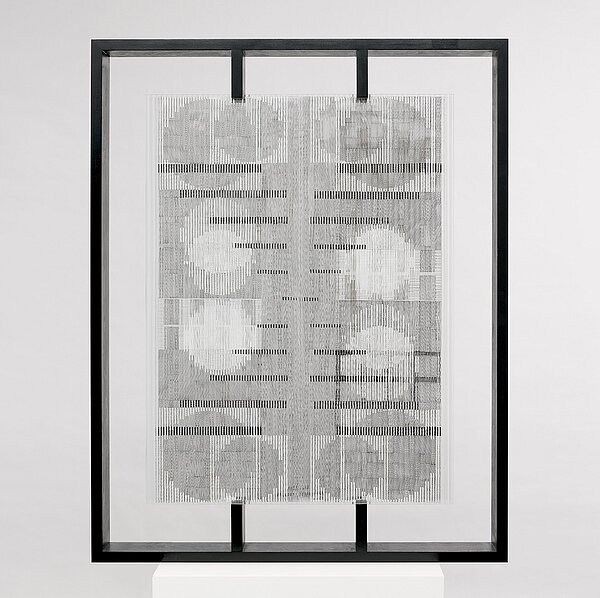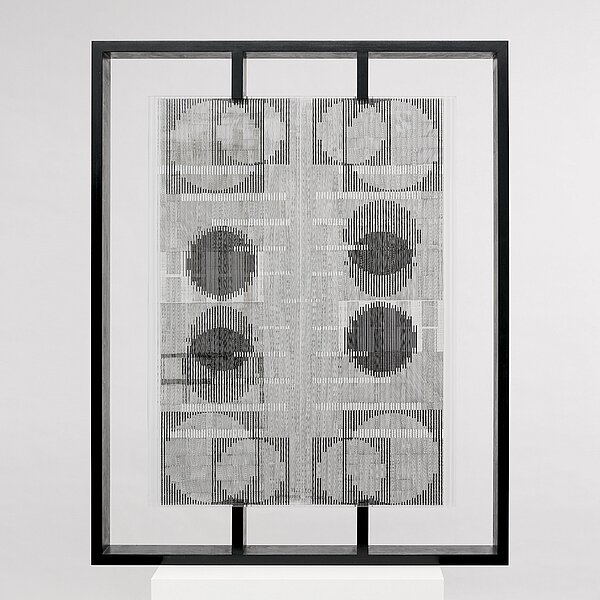Constantin Flondor
Pulsator III, 1968
Black and white inks on acrylic glass, ribbed glass, wood
122 x 97 x 12 cm
© Artist
Photos: Marcus Schneider
Pulsator III was made in 1968 and is one of the earliest material constructions that marked Constantin Flondor’s temporary move from his yearslong practice with paint, brushes and chalk pastels, and his adoption of a completely different creative approach. The new phase lasted until the end of the seventies, during which time he created picture objects, sculptures and room installations in a great diversity of materials. Apart from acrylic and ribbed glass, which Flondor also employed in Pulsator III, his stock of materials now encompassed aluminium, steel, wire and plastic.
With his wide-ranging innovations, which also took him into the fields of film, photography, actions, and projects in the open countryside, Flondor numbered among the most progressive artists in sixties and seventies Romania. In 1966 he was a founder member of 1+1+1, whose ideas he later continued to develop with the Sigma 1 group. Inspired by the Bauhaus and Constructivism, Flondor worked with his colleagues on a large number of aesthetic experiments in which they tried to draw closer to science, technology, architecture and design. The writings of Paul Klee, along with mathematics, physics, structuralism, cybernetics and bionics, provided the theoretical frame of reference for this.
Flondor’s fondness of technology also comes across in Pulsator III, both in his use of industrial materials and in the title of the work, which was taken from a pulsating machine. Not that the artist was set on raising technology to the absolute: his aim was to visualise and indeed transcend the processual forces of nature by means of geometrical shapes. The work consists of a transparent structure mounted in a wooden frame, in which circular discs, rectangles and horizontal strips stand out in black and white. The positive forms, when viewed from the one side of the work, present themselves as negative forms from the other side. Through the way the work’s overall axial symmetry is superimposed by interlocking circles and stripes that grow progressively shorter as they approach the centre, the strict planimetric layout of the work disappears in the very act of viewing it: the interferences between the visual elements and the ribbed structure of the glass discs transform the work into a weightless, immaterial veil that appears to the eye to be in constant vibration while one is in motion. (Hsiaosung Kok)
Constantin Flondor
1936 born in Chernivtsi (today: Ukraine)
Lives and works in Timiṣoara (RO)



